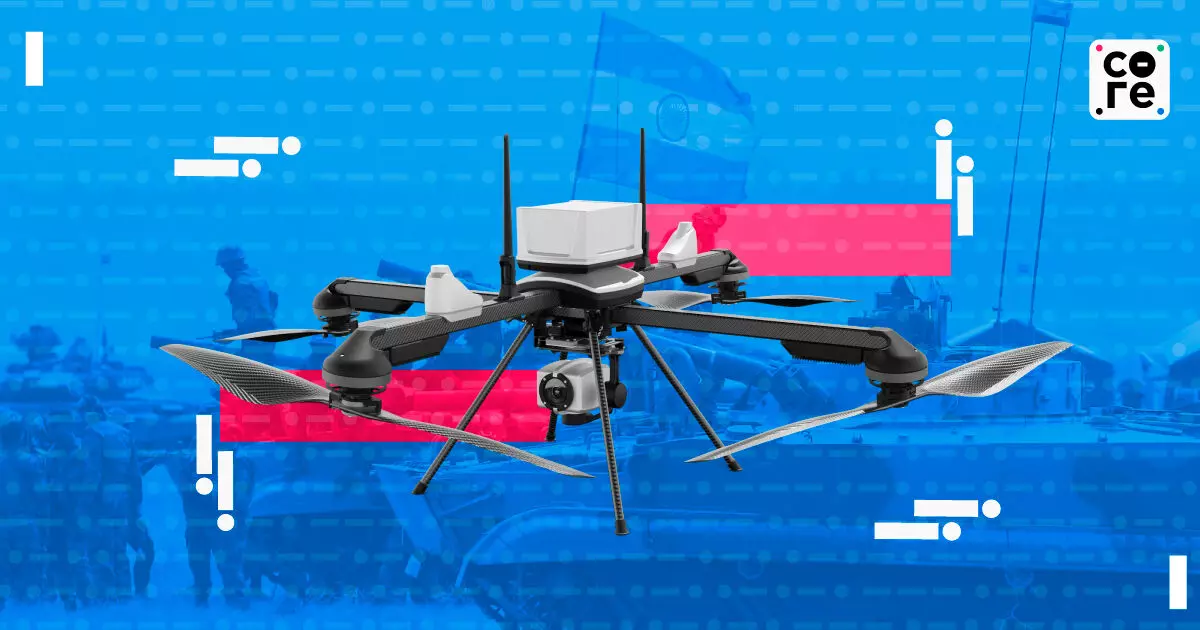
Drones Are Just the Beginning, India’s Private Sector Must Step Up Now
Drones, cyberattacks and misinformation highlight why India’s defence strategy must urgently integrate private innovation, entrepreneurial talent and new technologies to counter emerging security threats.

Many drone enthusiasts began by using their drones—built or imported—for simple tasks like taking pictures, shooting video, and eventually moved on to mapping and real-time surveillance.
Ankit Mehta and his co-founders launched Mumbai-based IdeaForge with roughly the same objectives about 20 years ago. All of them are IIT Bombay graduates or postgraduates who have combined passion with commercial ambition, achieving a fair degree of success, including an IPO two years ago.
But when terrorists attacked Mumbai in 2008, Mehta and his colleagues realised drones could serve far greater purposes. And so began a journey that increasingly aligned with the needs of both law enforcement and, in recent years, defence applications.
Today, IdeaForge says its dual-use (civil and defence) unmanned aerial vehicles have completed over 650,000 flights, one taking off every three minutes from their factories.
The Long Flight Of Indian Drones
If the 2008 terror attack changed the trajectory of Mehta’s company, the recent terrorist attack on Indian civilians in Kashmir is likely to trigger even deeper shifts, not just for IdeaForge, but for a wider set of companies and sectors.
There have been at least three new categories of battleground developments in the latest conflict between India and Pakistan.
First is the active use of drones, serving, in many ways, as a substitute for aircraft and traditional aerial warfare. Globally, many countries are already moving toward inducting more drones.
Perhaps the most visible example is Ukraine, where young people are literally soldering and assembling drones, then sending them, with deadly payloads, towards Russian forces.
The second is cybersecurity. India has been facing a surge in cyberattacks on both its infrastructure and financial systems.
The third is misinformation, or psychological operations.
A recent paper by researchers at the Observer Research Foundation concludes that hacktivists from Pakistan have targeted India’s defence-related organisations and state-owned enterprises with distributed denial-of-service (DDoS) attacks. India’s financial sector has also been seen as a key target.
The government’s Computer Emergency Response Team (CERT-In) issued an advisory highlighting the risk of cyber threat campaigns specifically aimed at Indian organisations.
The Bombay Stock Exchange (BSE) confirmed the threat in a statement two weeks ago. In response, both the BSE and the National Stock Exchange restricted foreign access and initiated enhanced cyber risk monitoring.
While these advisories and threat responses are unusual, India’s financial system is generally under constant attack, at some level or another.
The Invisible War Around Us
In my conversations with Chief Technology Officers, most—if not all—such cyberattacks are never disclosed publicly, for obvious reasons.
But the effort to thwart these attacks, which could slow down or freeze critical systems, including UPI which a great part of India’s transaction economy depends on, is relentless.
Herein lies the opportunity.
Both in the case of drones and cybersecurity, there is a far greater need for private sector participation and entrepreneurial involvement in national defence than perhaps ever before.
While the private sector is already playing a growing role in areas traditionally reserved for the government—from aerospace to space technology and, more recently, defence—the scale of opportunity that lies ahead is of a significantly greater magnitude.
And I would argue that this opportunity has only truly revealed itself in the past few weeks, and in ways we did not anticipate.
A Call For Private Innovation
The latest conflict on our borders has made it clear that not only have new threats emerged, but that countering them will require skills and innovation that cannot come from within the system alone.
Neither governments nor traditional defence technology companies alone are equipped to meet these demands.
Bridging the gap between India’s innovation potential and the evolving requirements of the modern battlefield—whether in advanced drones, cybersecurity, or countering misinformation—will require sharper focus than we’ve seen so far.
This is also a unique opportunity to tap into our homegrown talent more broadly and effectively—not only to prepare for the next war, but also to unlock economic growth by creating new jobs and enterprises in the process.
Drones, cyberattacks and misinformation highlight why India’s defence strategy must urgently integrate private innovation, entrepreneurial talent and new technologies to counter emerging security threats.
Drones, cyberattacks and misinformation highlight why India’s defence strategy must urgently integrate private innovation, entrepreneurial talent and new technologies to counter emerging security threats.

